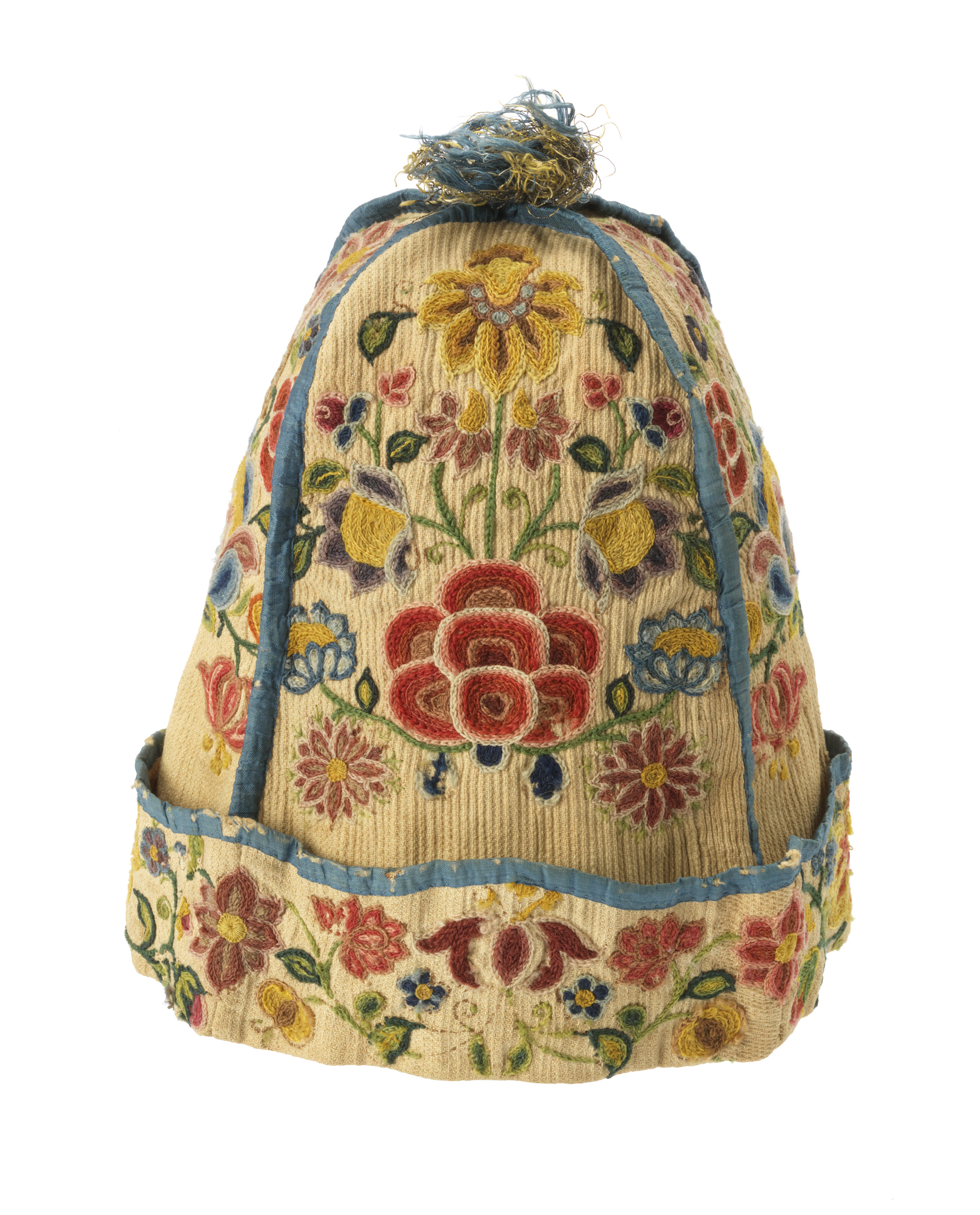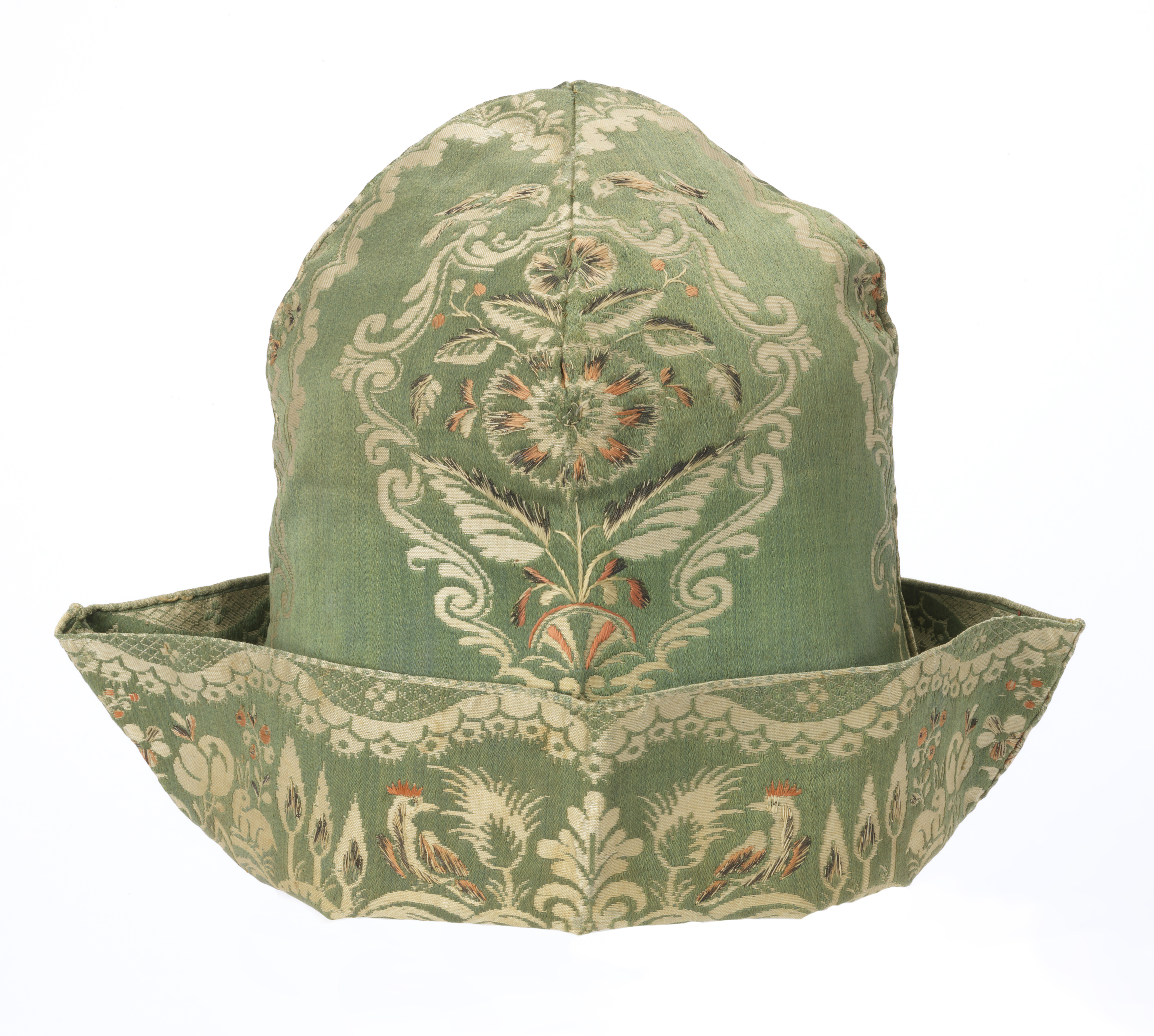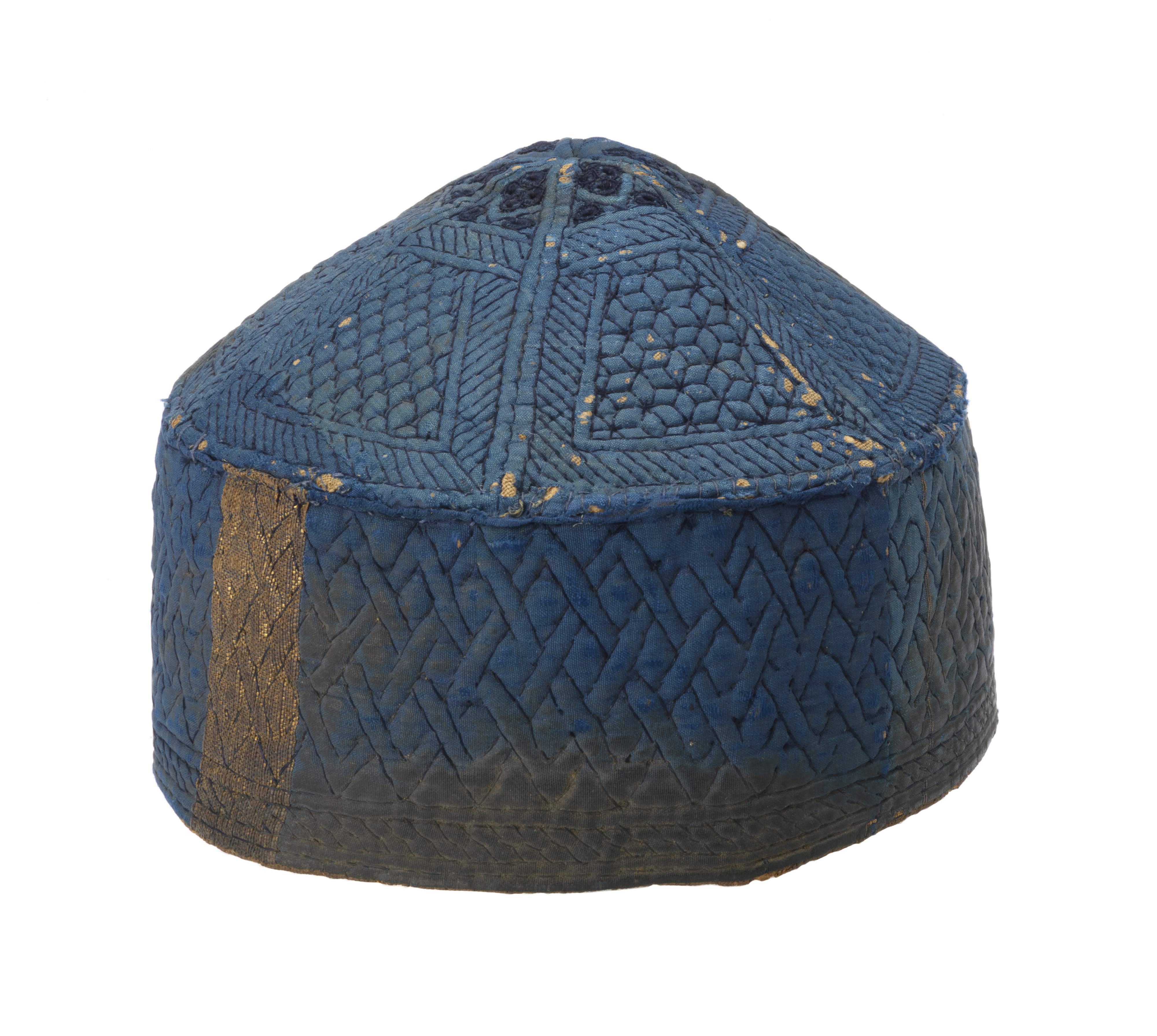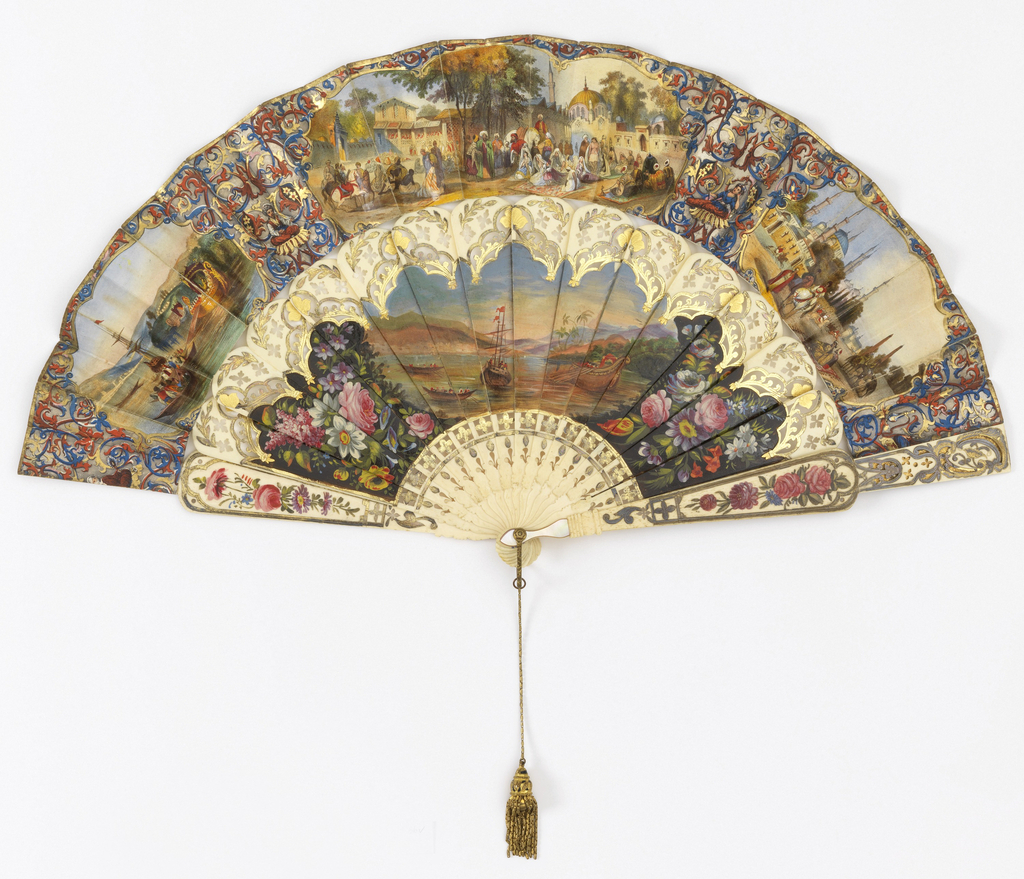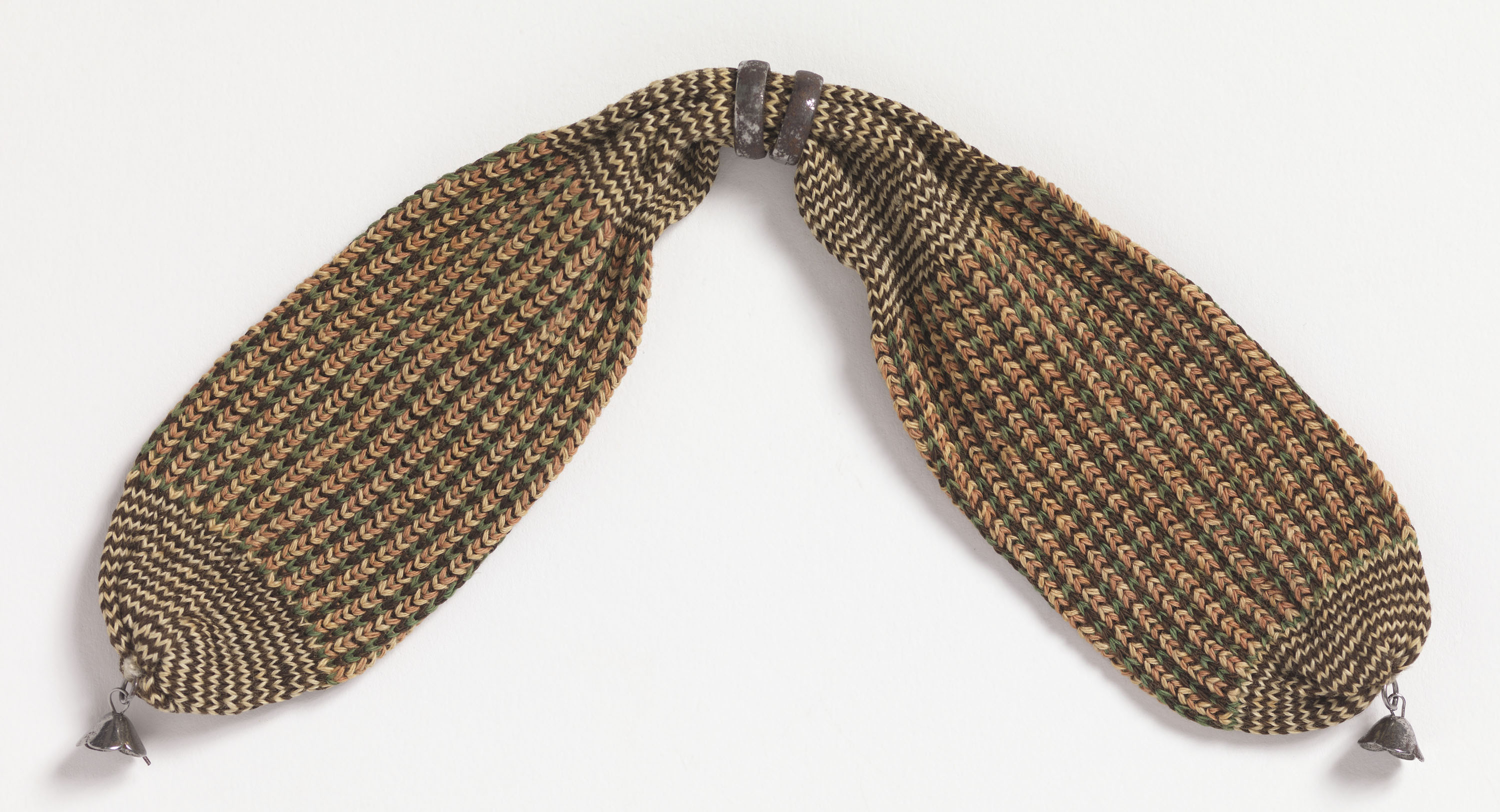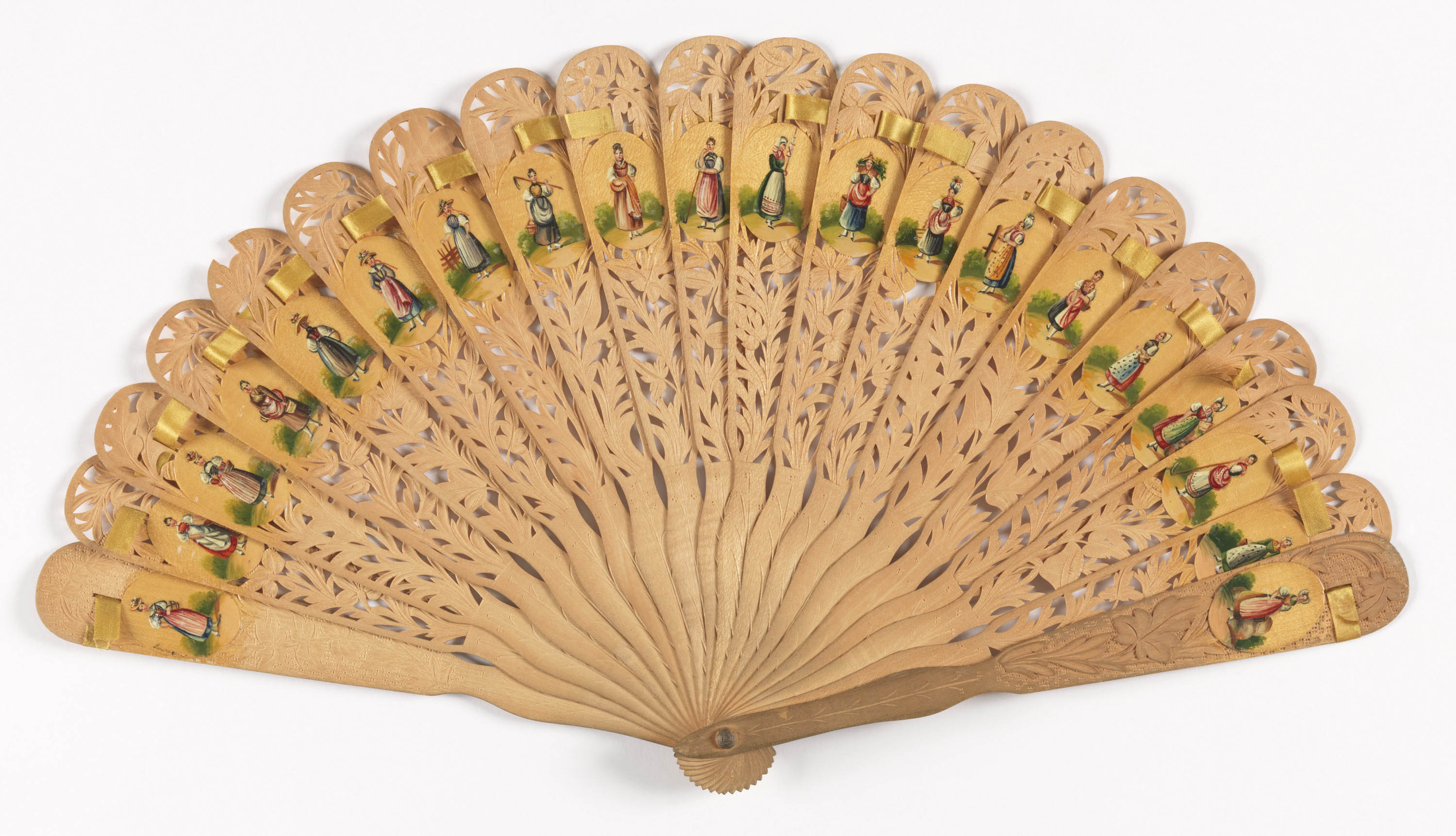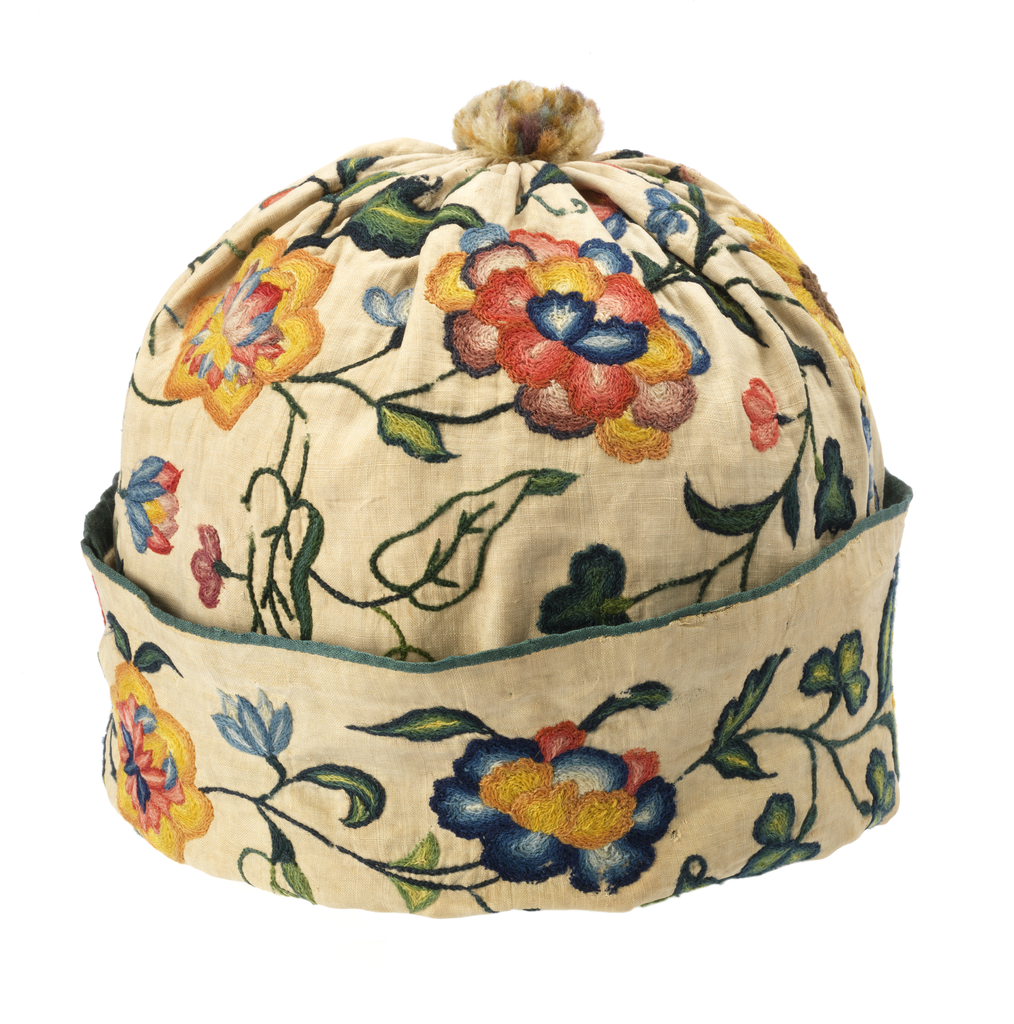This 18th-century hat, called a nightcap, is decorated with crewel, a wool yarn often used to embroider linen. Known as crewelwork, this technique was frequently applied to nightcaps, where it was worked into bouquets of exotic and imaginary flowers and winding stems. Similar motifs also appeared on colorfully dyed chintz, an Indian cotton textile that...
The intricate patterns on this cap precisely fit its shape, suggesting that the fabric was woven specifically for this purpose. Most likely produced professionally, the weaving, embroidery, and tailoring of caps such as this would have been completed in separate workshops. Wigs were common among men of many different social classes in eighteenth century France,...
This cap was used in Mamluk Egypt, a period during which textiles were perhaps the most precious items in Islamic society. Its finely-woven blue silk fabric is interlaced with ‘strap gold’: strips of membrane coated with real gold foil, making it among the most expensive and desired fabric types in Egypt at this time. The...
This fan’s printed scenes of the Ottoman Empire are after the English architect and landscape painter Thomas Allom (1804-1872), whose drawings were engraved and published in the 1840 book, Constantinople and the Scenery of the Seven Churches of Asia Minor. [1] The center image is of the Arut Bazaar, a female slave market in Constantinople....
Miser’s purses are oblong pouches primarily used to carry coins. The purses usually have center slit openings with pairs of sliding rings to secure coins in the purses’ ends, though sometimes clasp closures are used. The purses probably evolved from the 16th-century practice of storing coins in the toe of a stocking. Miser’s purses were...
During the nineteenth century, many European nations endeavored to define their cultural identities and to establish national histories. This romantic nationalism was characterized by a nostalgia that fueled an interest in historic folk customs. Peasants were commonly viewed as synonymous with nationhood and peasant costumes were the subject of interest and national pride. This fan,...
This nightcap, dating from the late 17th or early 18th century, was made using a technique called crewel, a type of embroidery worked with wool yarn on linen. Since men had shaved heads or very short hair to accommodate their wigs during this period, they wore caps like this one to keep warm after their...
What is a miser's purse and how does it work? Watch this short video to see Laura Camerlengo, author of the DesignFile e-book "The Miser's Purse," demonstrate how to use this nineteenth-century costume accessory. Interested? Check out "The Miser's Purse," an e-book by Laura Camerlengo now available in iTunes, Amazon, and most places e-books are...
